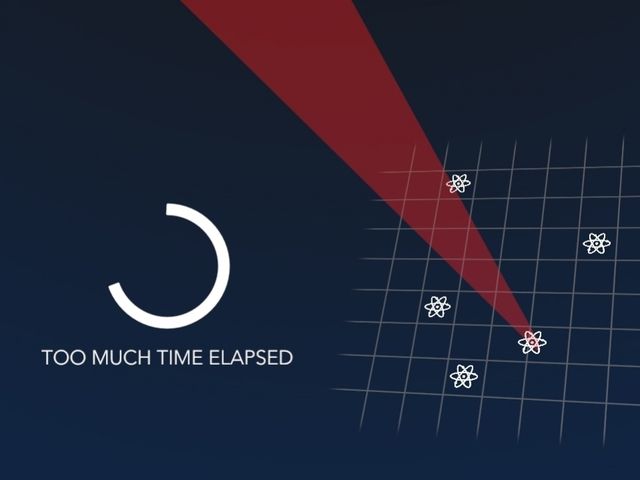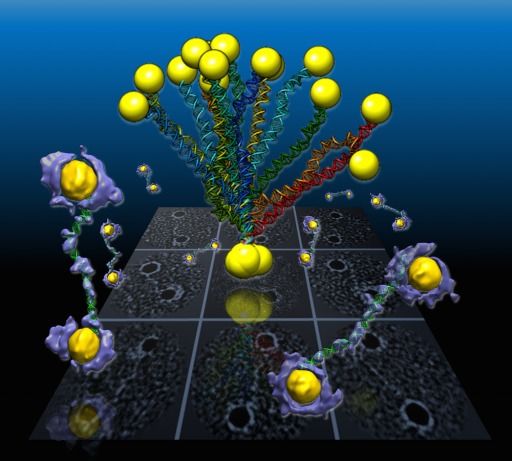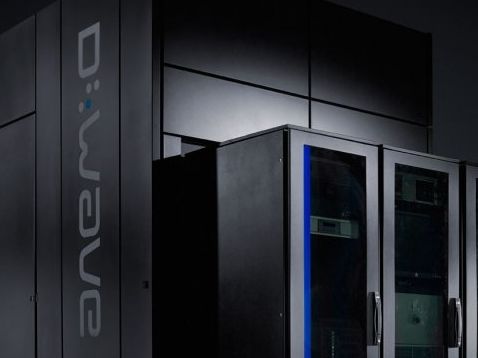Archive for the ‘computing’ category: Page 769
Apr 13, 2016
How To Get Better At Quantum Computing: Make A Game Of It
Posted by Karen Hurst in categories: computing, entertainment, internet, quantum physics
Creative approach and I like it. I advise IT leaders, developers, architects, etc. to start learning as much as they can about Quantum Technology because technology in the next 6 to 7 years will begin the accelerated adoption of this technology and at that point it will be too late for folks in tech to catch up. Now is the time to learn and keep track of the progression of this technology as well as understand where and how this technology can be leveraged earlier in various areas of the infrastructure, devices, and even in industry.
Researchers gave internet users games that simulate quantum physics experiments, and internet users gave the researchers more elegant solutions.
Apr 12, 2016
New hybrid inks permit printed, flexible electronics without sintering
Posted by Karen Hurst in categories: computing, electronics
Research scientists at INM have combined the benefits of organic and inorganic electronic materials in a new type of hybrid inks. This allows electronic circuits to be applied to paper directly from a pen, for example.
The electronics of the future will be printed. Flexible circuits can be produced inexpensively on foil or paper using printing processes and permit futuristic designs with curved diodes or input elements. This requires printable electronic materials that can be printed and retain a high level of conductivity during usage in spite of their curved surfaces. Some tried and tested materials include organic, conductive polymers and nanoparticles made of conductive oxides (TCOs). Research scientists at INM – Leibniz-Institute for New Materials have now combined the benefits of organic and inorganic electronic materials in a new type of hybrid inks. This allows electronic circuits to be applied to paper directly from a pen, for example.
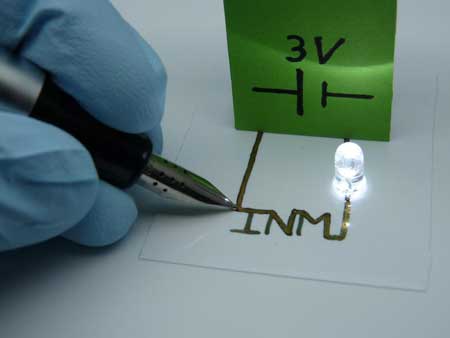
Continue reading “New hybrid inks permit printed, flexible electronics without sintering” »
Apr 12, 2016
Advances in quantum communication will come from investment in hybrid technologies explain Stefano Pirandola and Samuel L
Posted by Karen Hurst in categories: computing, internet, quantum physics
The question is what does Stefano Pirandola and Samuel L. Braunstein consider “hybrid” when it comes to QC? In much of the Quantum research today only shows us things like “synthetic diamonds”, etc. are added to stablize data storage and transmissions not much else.
Physics: Unite to build a quantum Internet. Braunstein.
Apr 12, 2016
DARPA Project to Seek Lightyear-Like Leap in Design, Manufacturing
Posted by Karen Hurst in categories: 3D printing, computing, engineering, government
With 3D printers; many small mom-and-pop manufacturers are easy to set up anywhere. Which brings in some interesting challenges when thinking about regulatory compliance and safety. Imaging a neighbor who was laid off gets a 3D printer and begins building and shipping things from their home. Plus they’re stock piling chemicals and other things in their basement or garage as “bi-products” in the production of the goods that they are building with their $15K 3D printer. Question for many is — how safe is it? how can this be monitored and controlled?
Manufacturers haven’t been able to fully exploit advancements in new materials, because computer-aided design and engineering tools haven’t kept pace, says a program manager for the government agency.
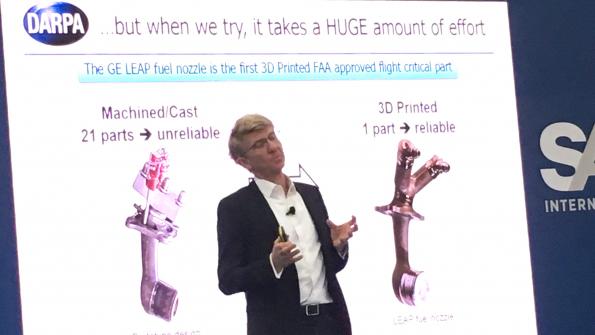
Continue reading “DARPA Project to Seek Lightyear-Like Leap in Design, Manufacturing” »
Apr 12, 2016
Berkeley Lab captures first high-res 3D images of DNA segments | KurzweilAI
Posted by Odette Bohr Dienel in categories: computing, DNA, electronics, health, nanotechnology
“DNA base pairing has been used for many years to direct the arrangement of inorganic nanocrystals into small groupings and arrays with tailored optical and electrical properties. The control of DNA-mediated assembly depends crucially on a better understanding of three-dimensional structure of DNA-nanocrystal-hybridized building blocks. Existing techniques do not allow for structural determination of these flexible and heterogeneous samples.”
Apr 12, 2016
The Ultimate Debate – Interconnect Offloading Versus Onloading
Posted by Karen Hurst in categories: computing, quantum physics
When I read articles like this one; I wonder if folks really fully understand the full impact of what Quantum brings to all things in our current daily lives.
The high performance computing market is going through a technology transition – the Co-Design transition. As has already been discussed in many articles, this transition has emerged in order to solve the performance bottlenecks of today’s infrastructures and applications, performance bottlenecks that were created by multi-core CPUs and the existing CPU-centric system architecture.
How are multi-core CPUs the source for today’s performance bottlenecks? In order to understand that, we need to go back in time to the era of single-core CPUs. Back then, performance gains came from increases in CPU frequency and from the reduction of networking functions (network adapter and switches). Each new generation of product brought faster CPUs and lower-latency network adapters and switches, and that combination was the main performance factor. But this could not continue forever. The CPU frequency could not be increased any more due to power limitations, and instead of increasing the speed of the application process, we began using more CPU cores in parallel, thereby executing more processes at the same time. This enabled us to continue improving application performance, not by running faster, but by running more at the same time.
Continue reading “The Ultimate Debate – Interconnect Offloading Versus Onloading” »
Apr 11, 2016
The cognitive era: Wither the machine brain
Posted by Karen Hurst in categories: computing, health, neuroscience, robotics/AI, singularity
My own prediction is that we will see singularity with humans 1st via BMI/ BI technology and other bio-computing technology before we see a machine brain operating a the level of a healthy fully funtional human brain.
Since War of the Worlds hit the silver screen, never has the notion that machine intelligence will overtake human intelligence is more real. In this two-part series, the author examines the growing trend towards cognitive machines.
Apr 11, 2016
D-Wave Systems is most disruptive company we’ve ever seen, says Paradigm
Posted by Karen Hurst in categories: computing, finance, quantum physics, robotics/AI
D-Wave not only created the standard for Quantum Computing; they are the standard for QC in N. America at least. Granted more competitors will enter the field; however, D-Wave is the commercial competitor with proven technology and credentials that others will have to meet up to or excel past to be a real player in the QC landscape.
Burnaby-based D-Wave, which was founded in 1999 as a spin-off from the physics department of the University of British Columbia has become nothing less than the leading repository of quantum computing intellectual property in the world, says the analyst. He thinks D-Wave’s customers will be positioned to gain massive competitive advantages because they will be able to solve problems that normal computers simply can’t, such those in areas such as DNA sequencing, financial analysis, and artificial intelligence.
“We stand at the precipice of a computing revolution,” says Kim. “Processing power is taking a huge leap forward thanks to ingenious innovations that leverage the counter-intuitive and unique properties of the quantum realm. Quantum mechanics, theorized many decades ago, is finally ready for prime time. Imagine, if we could go back to 1946 and have the same foresight with the ENIAC, the first electronic general-purpose computer. ENIAC’s pioneers created a new industry and opened up unimaginable possibilities. The same opportunity exists today with D-Wave Systems. D-Wave is the world’s first quantum computing company and represents the most unique and disruptive company that we have seen in our career.
Continue reading “D-Wave Systems is most disruptive company we’ve ever seen, says Paradigm” »
Apr 11, 2016
Reconstituting Asteroids into Mechanical Automata
Posted by Klaus Baldauf in categories: computing, robotics/AI, space travel
Jason Dunn Made In Space, Inc.
The objective of this study is for Made In Space (MIS) to establish the concept feasibility of using the age-old technique of analog computers and mechanisms to convert entire asteroids into enormous autonomous mechanical spacecraft. Project RAMA, Reconstituting Asteroids into Mechanical Automata, has been designed to leverage the advancing trends of additive manufacturing (AM) and in-situ resource utilization (ISRU) to enable asteroid rendezvous missions in which a set of technically simple robotic processes convert asteroid elements into very basic versions of spacecraft subsystems (GNC, Propulsion, Avionics). Upon completion, the asteroid will be a programmed mechanical automata carrying out a given mission objective; such as relocation to an Earth-Moon libration point for human rendezvous or perhaps to set an Earth-threatening NEO on course to the outer solar system and out of harm’s way. This technique will create an affordable and scalable way for NASA to achieve future roadmap items for both the Human Exploration and Operations Mission Directorate (HEOMD) and the Science Mission Directorate (SMD) such as Asteroid Redirect Mission (ARM), New Frontiers Comet Surface Sample Return, and other Near Earth Object (NEO) applications. It is estimated that an order of magnitude increase in NEO targets can be explored for the same mission cost with the RAMA approach compared to the SOA Asteroid Redirect Mission (ARM) architecture by removing the need to launch all spacecraft subsystems and instead converting the asteroid into them in-situ. Assuming the development trends continue for industry based AM methods as well as NASA and industry investments in ISRU capabilities, Project RAMA will create a space mission architecture capable of achieving the aforementioned NASA goals within a 20–30 year time frame. Furthermore, as described in the proposal, the identified study path will provide insight into near term Mission ‘Pull’ technologies worth investment in order to create the development roadmap for the proposed ‘Push’ technologies for achieving NASA’s long term strategic goals.

